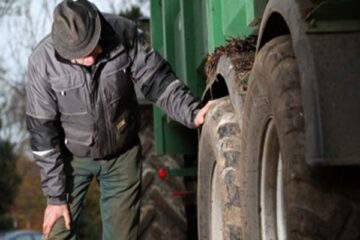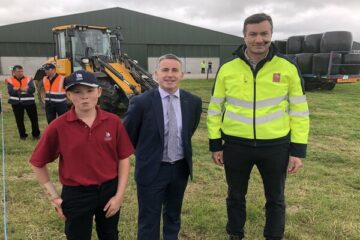According to a new survey from Teagasc, the number of farm accidents have risen by 31% over the last 10 years with a further 13% in the last five years.
The survey conducted by the Teagasc National Farm Survey (NFS) found that in the five year period 2012-2017 that 11% of farms had an accident and in total 2,814 accidents occurred.
The survey data represents 85,000 farms with a standard output of greater than €8,000. The study is co- authored by Teagasc Health and Safety Specialist, Dr John McNamara with Teagasc NFS colleagues Dr Emma Dillon, Mr Brian Moran and Dr John Lennon.
The survey indicates that 42% of accidents involved livestock with farm vehicles or machinery involved in a further 25%. Trips or falls resulted in 13% of farm accident followed by chainsaws (7%) and farm buildings (6%).
Dairy farms had the highest accident rate of 18% over the survey period compared to tillage (12%) and sheep (11%) farms with the cattle systems of rearing (9%) and finishing (8%) reporting lower accident levels.
The proportion of accidents involving farm vehicles or machinery has more than doubled from 2011 to 2017, while livestock related accidents increased by 26%. The survey, however, indicates a marked decline in the proportion of accidents due to trips and falls.
The survey showed that almost two-thirds of farm accidents occurred in the farmyard (64%) and a further 15% in farm buildings. Almost one-fifth of accidents (19%) were in fields with only 2% on farm roadways or lanes.
The 2017 Teagasc NFS survey indicates that the vast majority of on-farm accidents (92%) involved a family member, with 80% occurring to the farmer. Twelve per cent involved a spouse or another family member. The remaining proportion of accidents involved workers (5%) and others (3%).
Almost all farm accident victims (97%) required medical treatment with 73% attending hospital, a further 19% attended a doctor and 4% received first aid. Tragically 1% of such accidents reported resulted in a fatality.
In terms of work time loss due to a farm accident, almost one-third (30%) of accidents resulted in a work absence of more than a month, with 21% being more than two months. Thirteen per cent of accidents resulted in an 11 and 30 day work absence, 22% a 4-10 day work absence, and 1-3 days an 18% absence respectively. Just 17% of accidents resulted in no work time loss.
The Teagasc survey data indicates that younger farmers are more likely to have non-fatal accidents in contrast to fatal accidents. Thirteen per cent of farmers in the 40-50 and 50-60 age brackets suffered a farm accident, followed by 12% for farmers below 40 years of age. Nine per cent of farmers aged 60-70 and 7% over 70 years of age suffered a farm accident over the timeframe of the survey.
Responding to the survey, Minister for Agriculture, Food and the Marine, Michael Creed T.D. said:
“These non-fatal accident statistics make for stark reading and highlight that behaviour is an important part of safety. My Department have included a farm safety component to the Knowledge Transfer Group meetings and also made farm safety a mandatory part of drawing down TAMS grants.
“Farmers need to take time to plan their work and not take risks. The impact on families of serious accidents is unquantifiable, so I appeal once again to farmers to make the change to keep safe.”
Teagasc Director, Professor Gerry Boyle concluded:
“Farm accidents cause tragedy, pain and suffering, disability and economic loss, so it is vital to give safety first priority. Teagasc will be focusing on lessons from the survey findings in its efforts to assist farmers to improve farm safety.”



